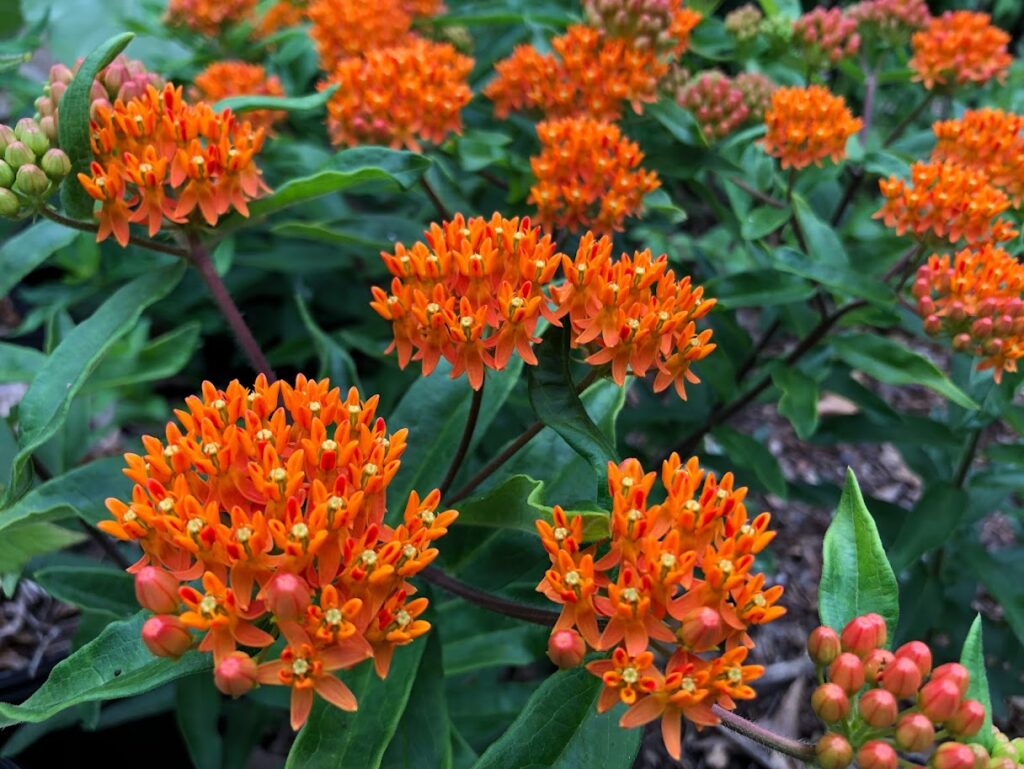
More and more very good people with the best of intentions are giving away Common Milkweed (Asclepias syriaca) seed pods on Halloween. Here’s why that’s a bad idea.
Continue reading

More and more very good people with the best of intentions are giving away Common Milkweed (Asclepias syriaca) seed pods on Halloween. Here’s why that’s a bad idea.
Continue readingAs the leaves start to fall in earnest I want to revisit what I say every year to the lawn warriors out there: Mow your leaves.
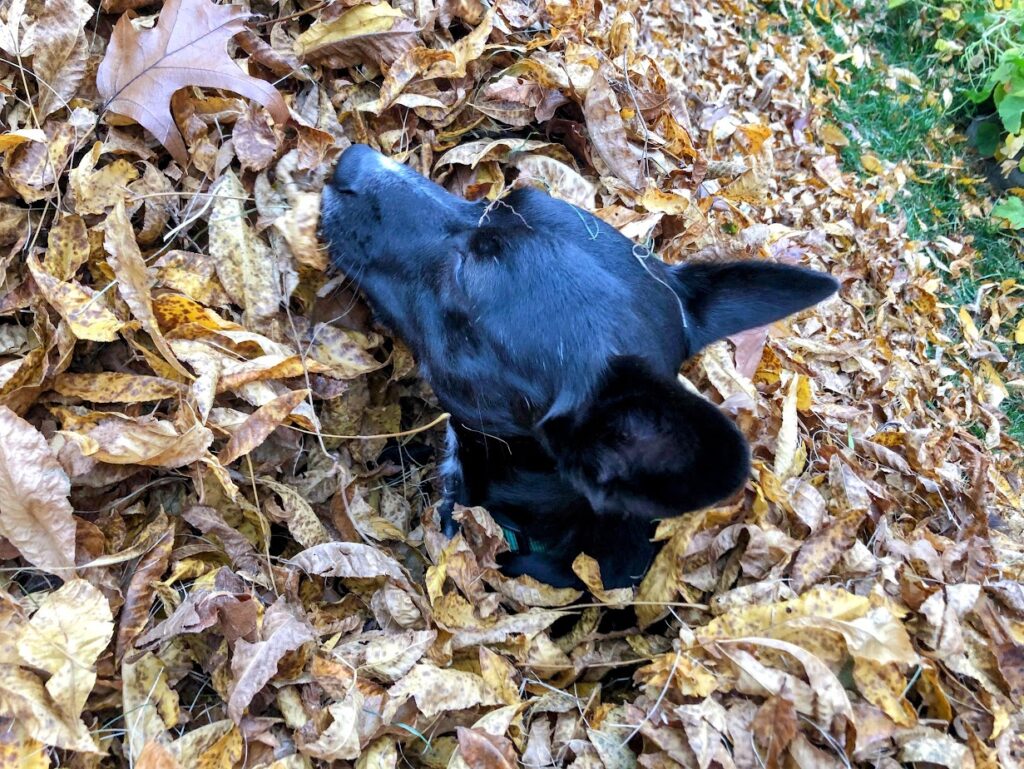
That’s right, mow them right into your lawn. It saves you time, it saves you money, it feeds your lawn, and if you’re going to bag and dispose of them otherwise then this is a way to help the planet too. (There are even better uses of leaves but I’ve gone over that many times and will probably do another post about that soon.)
Oh, and all the lawn companies and Ag schools say to do it too, because they’ve tested it and found that it does everything I said above.
Mowers with mulching blades will do it best but most gas/electric powered mowers will do the same job, though it might take a few more passes.
Folks like me with reel mowers don’t have this option, but if you’ve got a reel mower then you’ve probably already shrunk your lawn – good for you! – and those leaves can easily be raked into your perennial gardens where they’ll again feed the soil and they’ll provide shelter for the insects that the birds need to eat for their protein.
The growing season is coming to a close and you’re debating whether to “clean up” the yard, leave everything for the birds, or something else. Choose “something else.”
By all means leave some large portion of the plants in place so they can feed the birds and the insects that the birds eat, but all too often I hear people say that they’re going to leave all of the seed heads so the seeds can randomly appear in other people’s yards for them to enjoy.
Don’t do that. It is a waste of seed. In ‘mow and blow’ America, any seeds that survive to germination are far more likely to get mowed down or sprayed with herbicide than create an idyllic patch in your neighbor’s yard.
So here are a few suggestions about what to do with your seed heads:
DO leave a bunch of seed heads on your plants over the winter. This will feed the birds, their slovenly habits (as well as their poop) will help make sure new plants grow in the same location and the stalks will help capture fallen leaves, which feed the insects which then also feed the birds. It is the big poopcycle of life.
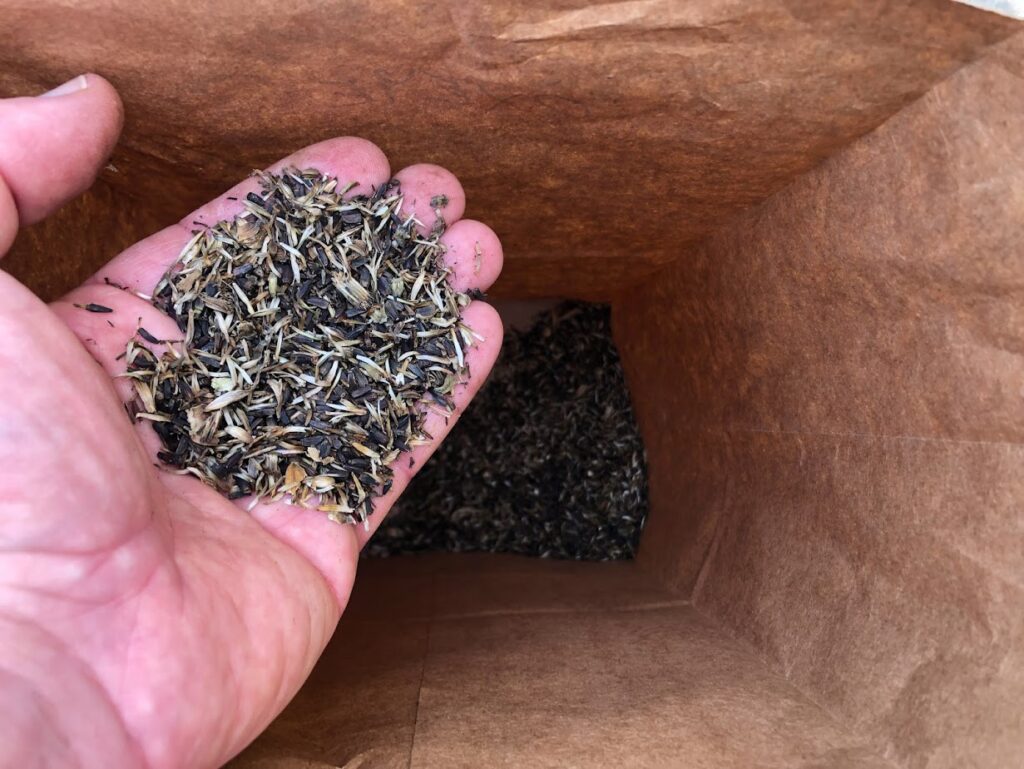
Save a bunch of seeds. Many native plants have seeds that the birds want to eat, but a whole bunch of native plants do not. Your milkweed seeds aren’t a big hit with any birds. Nor are Ironweed, pyeweed nor many others. Leaving those seeds for the birds is futile.
If you like the way they look or just want to relax instead of doing garden work, then by all means let them stay where they are, but leaving them all there isn’t going to do much.
Share your seed with others. There are always new and experienced gardeners looking for specific seeds. I sometimes feel like if gardeners were offering native seeds only within their own community the entire town could be full of pollinators in three years. Offer them in your gardening or free group. Offer them on your town page. Offer them to family and friends. Get those seeds into the hands of people who want them, rather than hoping the seeds get there in the wind.
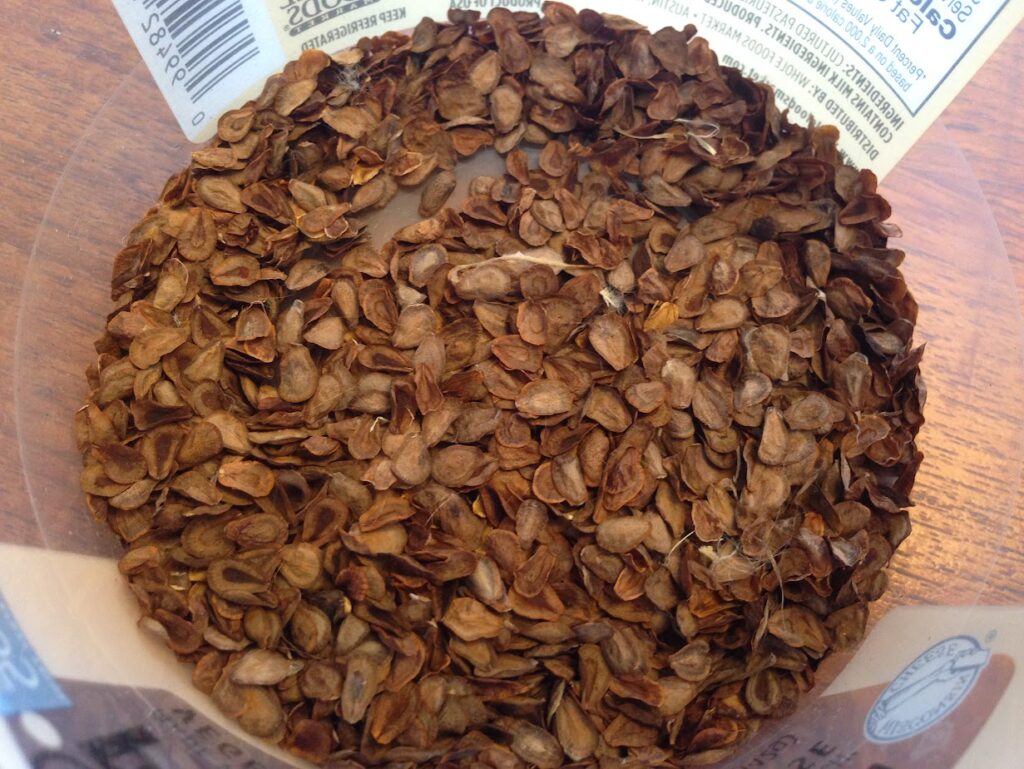
Sow them where nobody cares. If you want to make a whole project of it, more power to you, but if you have a space that is just a crappy looking no-man’s land that nobody maintains and consequently is filled with (invasive) weeds, just throw the seeds there. (In the fall. Remember that most native plant seeds require cold stratification!) Near me I see miles and miles of land right next to the highway, beyond the mowed portion, that is filled with all sorts of weedy overgrowth. I have images in my head of a car driving in the far right lane with the passenger flinging fistfuls of seed as they go. I am not a lawyer, but this may not technically be “legal.”
Worst case scenario is that someone comes and mows or develops the site. So what? You weren’t going to use those seeds anyway!
Be realistic. Fistfuls of seed flung from a moving car aren’t likely to repopulate a stand of invasive Japanese Knotweed with pollinator friendly native species. However, that is far more likely to be successful than simply allowing these to blow into the neighbor’s yard.
So start saving native and beneficial seeds and do something good with them!
Japanese Knotweed is a menace that is very difficult to control. It is native to areas where lava flows, yet some people seem to think they can kill it with tarps, incantations and smudge sticks. Below is, as condensed as possible, accurate information about how to control Japanese Knotweed: What to buy, where to buy it, how to dilute it, and how to apply it.
Continue readingI posted a variation of this on my Facebook page more than a year ago. It is a very popular post and posting here will hopefully reach a larger audience. I’m finally posting here after another Bald Eagle in our town has succumbed to rat poison. Please share this with people who might find it useful.
DO NOT USE RAT POISON.
Continue readingSummer of 2022 is a serious drought in Massachusetts. Lots of people and organizations are providing lots of good information about how to help plants survive drought conditions, but few are talking about soil health to combat drought, so I’d like to provide a bit of information to folks about it.
Continue reading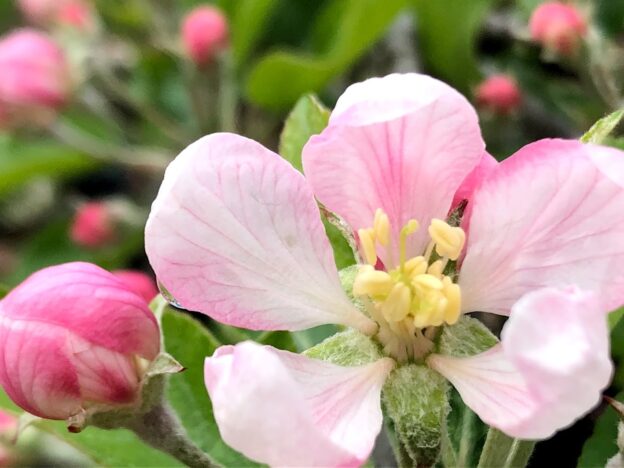
Every year I feel bombarded with these messages and memes about leaving dandelions in order to save the bees, usually with a part about how dandelions are the bees first food in the spring. Nonsense.
Continue reading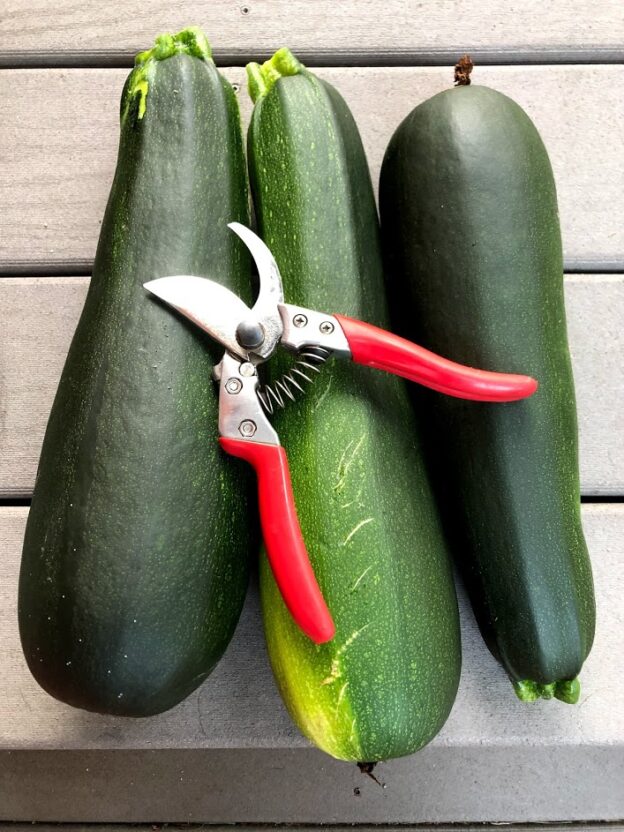
It is coming up fast – national Sneak a Zucchini on Your Neighbor’s Porch day is Sunday, August 8.
If you are the lucky recipient of one of these, or if you have your own you want new recipes for, or if you have a giant overgrown zucchini you forgot to harvest until it was the size of a baseball bat on steroids, I’ve got a suggestion for you.
Giant zucchini can be difficult to work with in many of the traditional zucchini dishes. It is thicker, the seeds are large, and both the flavor and texture can be lacking. So you want to use them in a dish where those will be covered up or corrected in one way or another.
I’ve rapidly become a fan of using overgrown zukes in a casserole.
Ingredients:
Instructions:
Shred zucchini with a grater or in the food processor. Place in a bowl with some salt and let sit for 5 minutes or so to soften the strands and to release some of the water.
Rinse with water to get the excess salt out, then pour into a towel and squeeze water out of the strands.
Chop onions and sausage. Sautee in olive oil until both are the consistency you prefer.
In a medium to large sized bowl, beat two eggs. Add the zucchini and mix to coat. Add garlic, feta, bread crumbs or panko, parmesan, whatever fresh herbs and spices you’d like. Dill is an obvious choice and works well, but I prefer using paprika, chipotle powder and fresh chopped thyme.
Unceremoniously plop it into an oiled 8×8 baking pan and flatten it out. Bake at 350° for about 35 minutes or until the top begins to brown a bit. Serve warm.
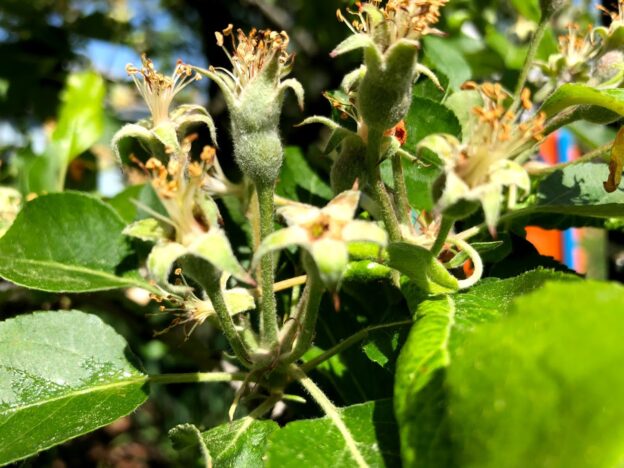
If you haven’t yet, get your sprays and protection together. Right now (if your flowers have finished blooming), you can start spraying, and soon bagging, your apples.
This year I’m going to spray a mix of pure neem oil and BtK to protect from a variety of soft-bodied insects and caterpillars.
By waiting until the flowers are done, you’re protecting pollinators, but please be careful not to spray flowering plants that may have pollinators on them. I’ll do this 2 or 3 times over the next few weeks, spraying the entire tree but paying special attention to leaves that may have damage already, and spraying the trunk of the tree to kill any caterpillars that may be making their way up from the soil.
In one week or so, the apple clusters will be large enough to thin and bag. Each cluster will (usually) have five apples. Painful as it is, you want to remove four of them.
I know, it hurts. It is painful and difficult and you feel terrible doing it but it is the right thing to do for several reasons.
1. Thinning the apples allows the tree to put more energy into the remaining apples, making them larger.
2. Trees that expand all their energy trying to grow all the apples often produce every other year – a cycle not easily broken.
Finally, you’re going to want to protect the ripening fruit from other insects (plum curculio, apple maggot and more). Rather than spraying the trees over and over again, I like to bag the remaining apples with drawstring organza bags.
Slip an organza bag over the apple, pull the drawstring, move to the next apple. It goes very fast. Many people like to use paper bags, ziplock bags with a corner cut off and specialty bags made for just this purpose. Use whichever you prefer. I find the organza bags fast and easy and I can reuse them year after year (as long as the squirrels don’t destroy them).
In the past I’ve used Surround, which is very fine kaolin clay. Spraying the clay also reduces the need for pesticides. The color and/or texture of the clay confuses some insects and they decide to look elsewhere for a meal. I found that it worked okay in some instances but only when the trees and fruit were thickly coated with the clay, which requires multiple applications during the season. Bagging is required only once.
Some will recall that a tree covered in bags looks… ridiculous. I get lots of fun questions about our tea bag tree as well as polite people who just kind of look at the tree… for a long time… without saying anything in hopes the answer will become obvious.
Despite that, and the time it takes to bag a few hundred apples, I find it the best option as far as time, personal energy spent, and doing less harm to the environment.
And for those who will tell me that this doesn’t work for people with lots of apples: I agree with you. The idea of bagging thousands of apples is difficult to justify for a home grower. However, for the gardener with only a few trees, wanting to get actual fruit but not interested in repeatedly spraying pesticides that kill lots of beneficial insects at the same time, the above method works really well.
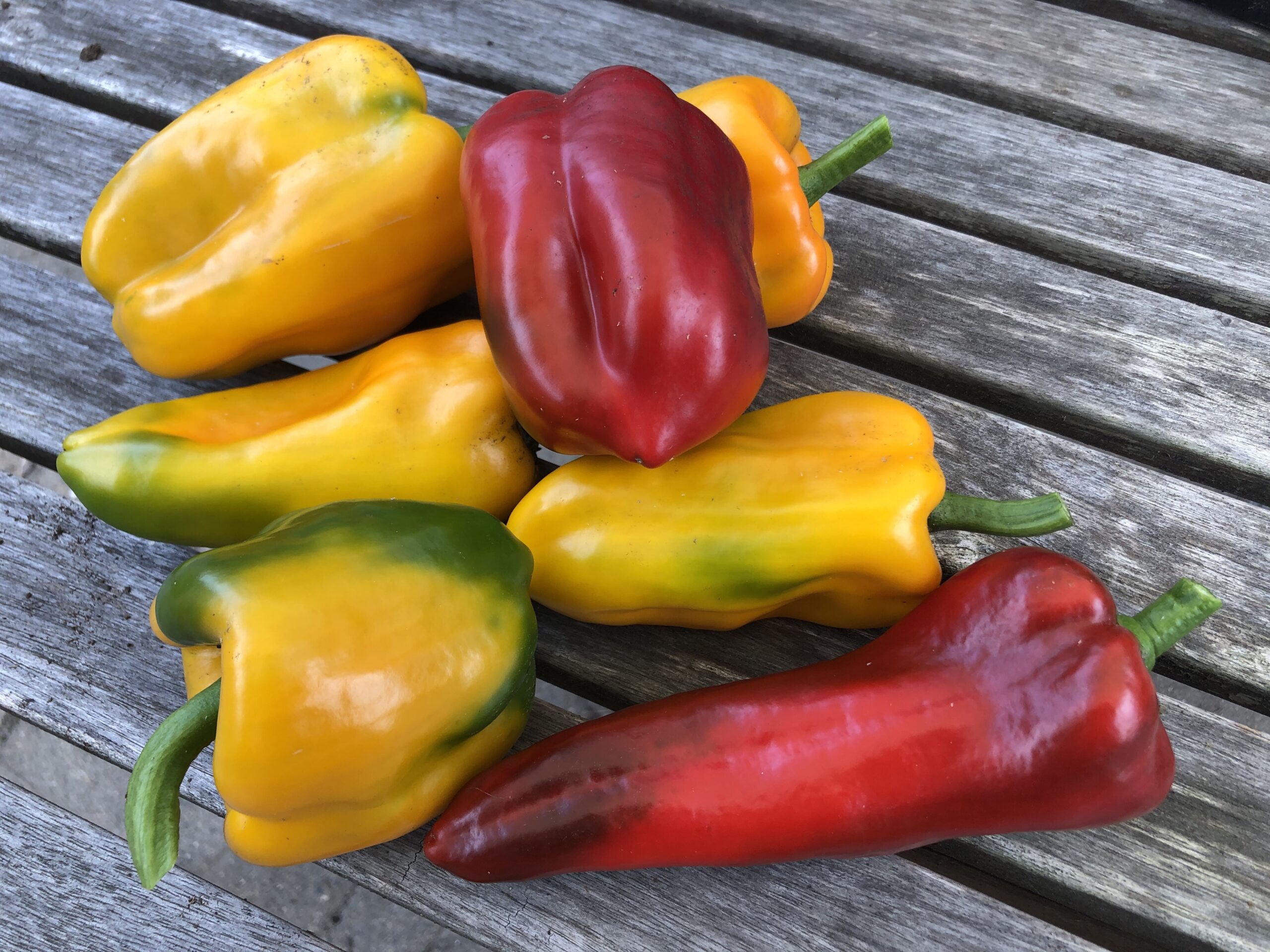
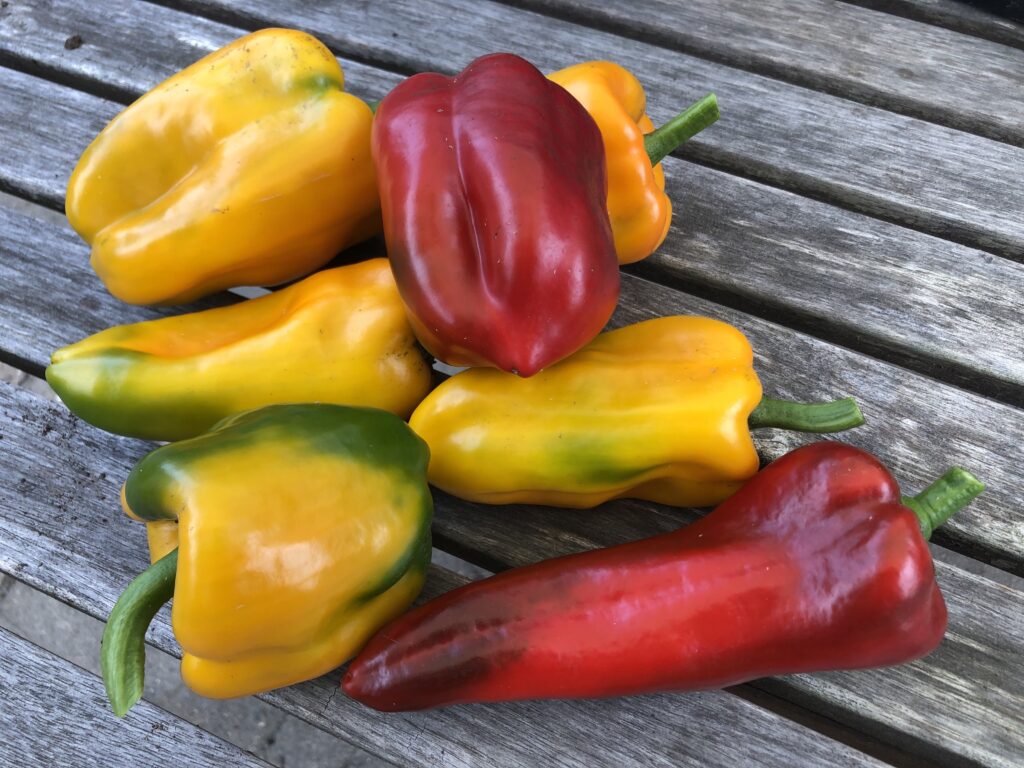
I stopped growing peppers for a few years due to pepper maggots. Each time I’d pick a pepper I’d see the small “stings” on the flesh and know that when cut open it would be a rotted gooey mess, with or without a maggot (or three) squirming around inside. It was gross.
Hoping to kill off any that might be overwintering from my garden, I didn’t grow bell peppers for three years. (I did grow some hot peppers which had some pepper maggot damage, but not much.) At the risk of sounding like a broken record, it is great we live near so many great farms to fill in the gaps of items we cannot grow.
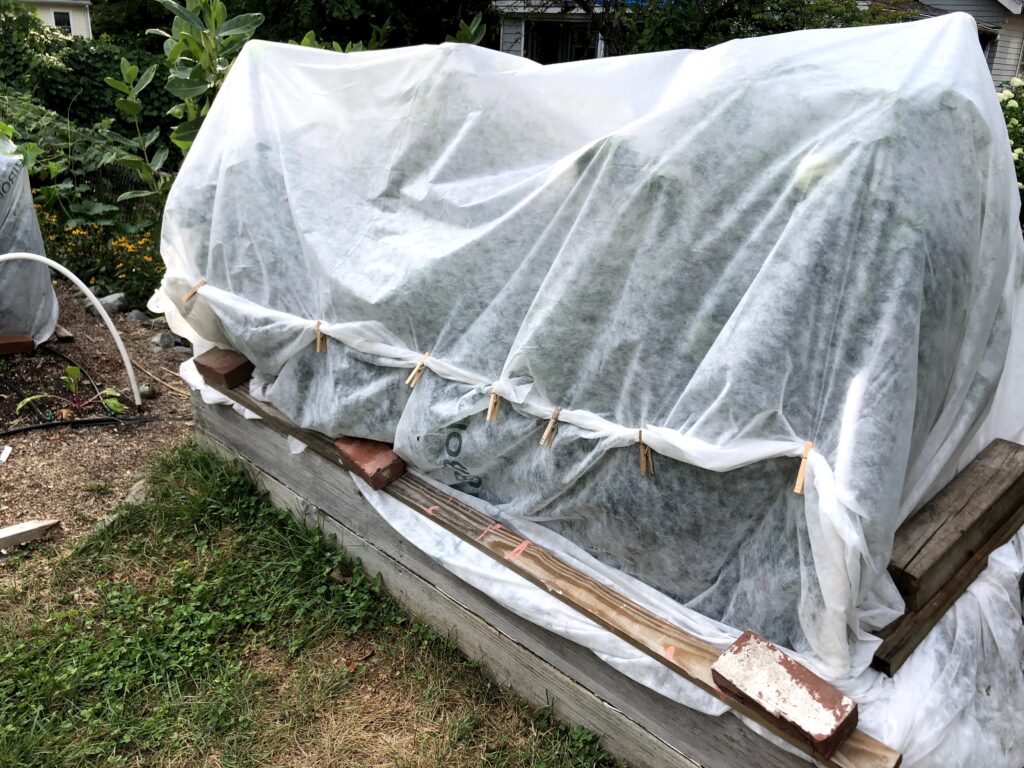
This year I’ve got peppers growing under row cover. It keeps the flies out, so the peppers develop maggot free. Peppers do not require pollination, so they develop even if pollinators can’t get to them. So far I lost zero peppers to pepper maggots.
There have been some issues with white flies which, under cover, have a grand old time without fear of predators. A quick spray or two of insecticidal soap takes care of them though.
Remember, adding dish soap to water is NOT “insecticidal soap.” Totally different – be sure to buy actual insecticidal soap.
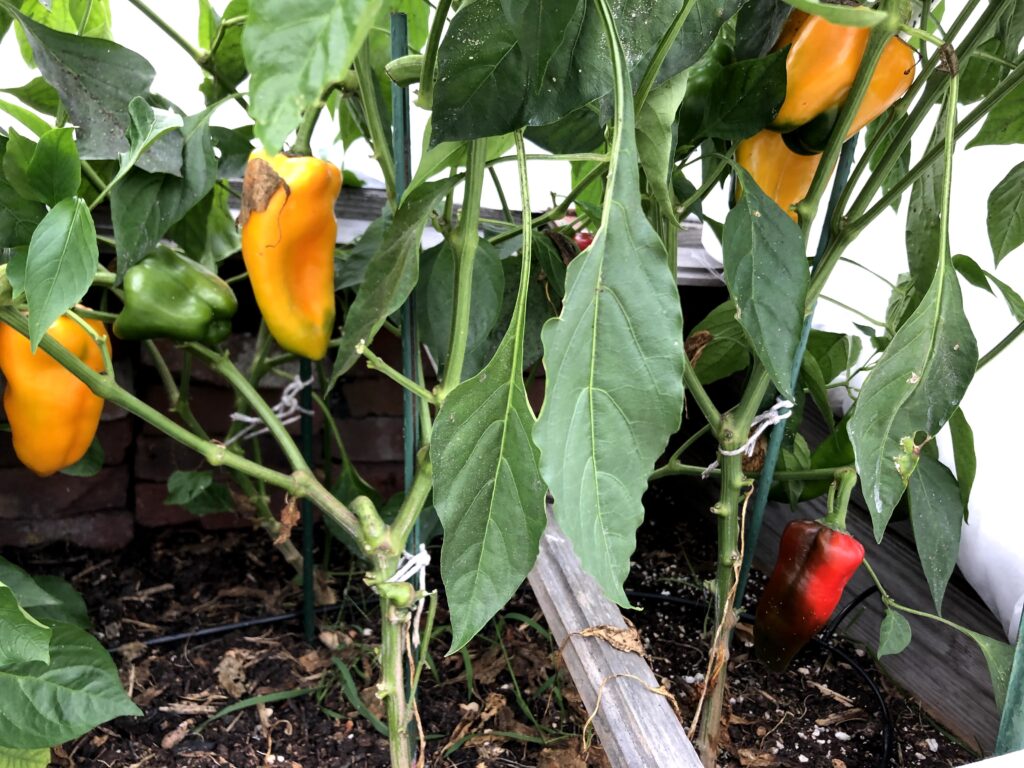
Covering isn’t complicated and it doesn’t need to be perfect, just good enough. If you’re on good terms with a local farmer, they may even have some scraps they’re willing to give you.